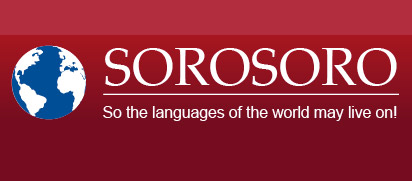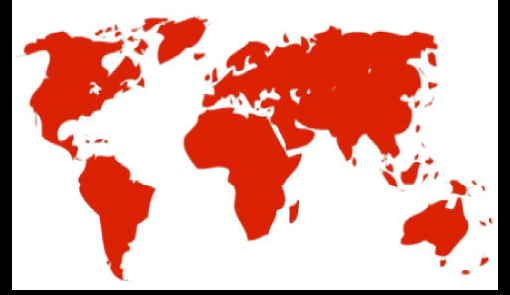Print  |
|

Ch’ol
Data collected by UNICEF
Data on the Ch’ol language
Alternative names: Chol, Lak t’an, Lak ty’añ
Note: The origin of the term Ch’ol isn’t clear. It is a possible reference to the root ch’ol as in the word « corn ». Lak ty’añ refers to the self-designation (which may be translated by « our language »).
Main dialects: There are three main Ch’ol dialectal groups, according to Coon (2004): Sabanilla Ch’ol, Tumbala Ch’ol, and Tila Ch’ol. The latter can also be divided into two dialectal subgroups: North and South. These variants are mutually understandable, though the differences are clear and acknowledged by the speakers. The Tila dialect is the one that has been studied the most. Other sources only recognize two main dialectal groups, with no distinction between Tumbala and Sabanilla Ch’ol (which is the case of the Ethnologue, 16th edition).
Classification: Mayan language family, Ch’ol branch
Geographic area: Mexico, in the highlands of northeastern Chiapas. Mainly in the localities of Tila, Tumbalá, Sabanilla, Catazajá, La Libertad, Salto de Agua, Palenque, Ocosingo, Yajalón, Huitiupán and Chilón. Some speakers are said to be found in the state of Tabasco.
Number of speakers: A 2005 census accounted for 185,299 people who declared themselves Ch’ol. A very large majority of these is believed to speak the language. Estimates of the number of speakers generally reach over 100,000. Ethnologue.com mentions around 140,000 speakers.
There could be a high number of monolingual Ch’ol speakers (perhaps 50,000, according to Ethnologue.com)
Language status: In Mexico, Spanish is the official language de facto, although just like the other indigenous languages of the country, Ch’ol has a status of « national language », which in theory grants the language generic protection.
According to Linguamón:
« The country has established highly extensive legislation on its indigenous languages. The most noteworthy text in that respect is the General Law on the Language Rights of Indigenous Peoples (Ley General de Derechos Lingüísticos de los Pueblos Indígenas). In force since 2002, the law in question is geared to recognising and protecting the individual and collective language rights of Mexico’s native communities, and to nurturing the promotion, use and development of the country’s indigenous tongues, which enjoy the status of ‘national languages’. In reality, however, Mexico’s language policy tends more towards assimilation than the promotion of native tongues and cultures. »
Media: The language is present is certain local media. XEXPUJ radio includes a few hours of broadcast in Ch’ol.
Education: Education is carried out in Ch’ol during the first years of primary school, followed by a gradual shift to Spanish, which then becomes the only language of education.
Vitality & Transmission: Ch’ol does not stand among the languages deemed as « endangered » by UNESCO.
Transmission is carried out. The language is used daily within the communities, and most particularly in rural areas. There is a significant proportion of monolinguals (especially elders and people who have not been to school). However, the language is losing momentum in the urban areas.
The younger generations are usually Ch’ol/Spanish bilinguals; and Spanish is usually viewed as the language of prestige. Ch’ol is often associated with negative representations for these generations, and the chances are high that, with the accelerating rural-urban migration, the future generations might stop transmitting their language.
Historic & ethnographic observations
From a historic point of view, Ch’ol is associated with the state-city of Palenque (5th-9th century AD), of the classical Maya civilization. To a large extent, linguists wouldn’t have been able to decipher the Maya writing system if it wasn’t for Ch’ol.
Urban centers such as Palenque were abandoned around the 10th century, for reasons that are still under debate nowadays. Nevertheless, the Ch’ol population did not disappear. Communities got smaller and more centered on farming, but the Mayan Ch’ol language and culture was still very much alive when the Spanish conquistadors launched the conquest of today’s Mexico.
The Spanish colonization generated a drastic decrease of the Amerindian population, mainly because of viruses imported from Europe. Yet the Ch’ol showed a strong resistance to colonization, and suffered violent « pacification » in the course of the 17th century; the communities were occupied and relocated one after the other. Thus the surviving Ch’ol population, originally from the lowlands, was forced to relocate in the highlands of Chiapas, in the present regions of Tila and Tumbala.
See Josserand & Hopkins (1996) and Coon (2004) for further information on the Ch’ol people.
Sources
Díaz Couder Ernesto (2010). « México » In « Atlas sociolingüístico de pueblos indígenas en América Latina », UNICEF. Tome 2, pp 889- 916.
Online sources
Page devoted to Ch’ol on the Linguamón website
Additional bibliography
Coon, Jessica L. 2004. Roots and Words in Chol (Mayan): A Distributed Morphology Approach. Bachelor Thesis. Reed College, Portland. [Online]
GRINEVALD, C. 2007 «Endangered Languages of Mexico and Central America», in Brenzinger, M. (éd.), Language Diversity Endangered, Trends in Linguistics, Mouton de Gruyter, Berlin-New York.
Josserand, J. K. & Hopkins, N. A. 1996. Chol ritual language. FAMSI. [Online]
Please visit the Atlas sociolingüístico de pueblos indígenas en América Latina for a more comprehensive bibliography.
Please do not hesitate to contact us should you have more information on this language: contact@sorosoro.org








